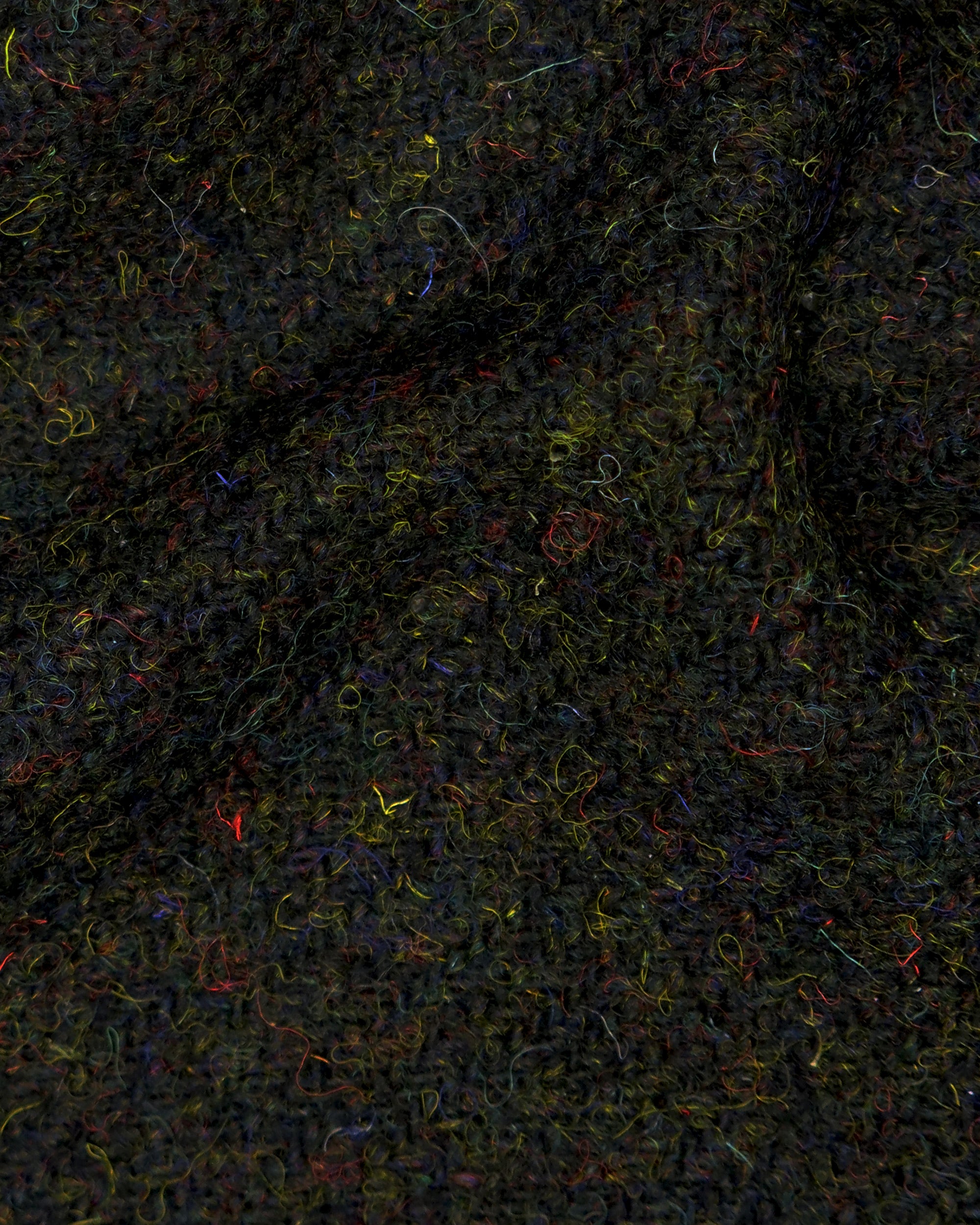
· HARRIS TWEED® ·
HarrisTweed® is more than a unique hand-woven textile, it is also the story of a emblematic place with rich history and culture, beautiful landscapes and vibrant communities located in the beautiful, remote islands of the Outer Hebrides in Scotland. For many generations, the islanders of Lewis, Harris, Uist and Barra, in the wild and beautiful Outer Hebrides of Scotland, have woven fabrics in their own homes, known as HarrisTweed®. Made from pure virgin wool dyed, spun, treated and finished by artisans in the Outer Hebrides. In addition to being natural, biodegradable, non-allergenic and water-repellent, HarrisTweed® is energy efficient to create and beautiful, durable and practical to use.
The process
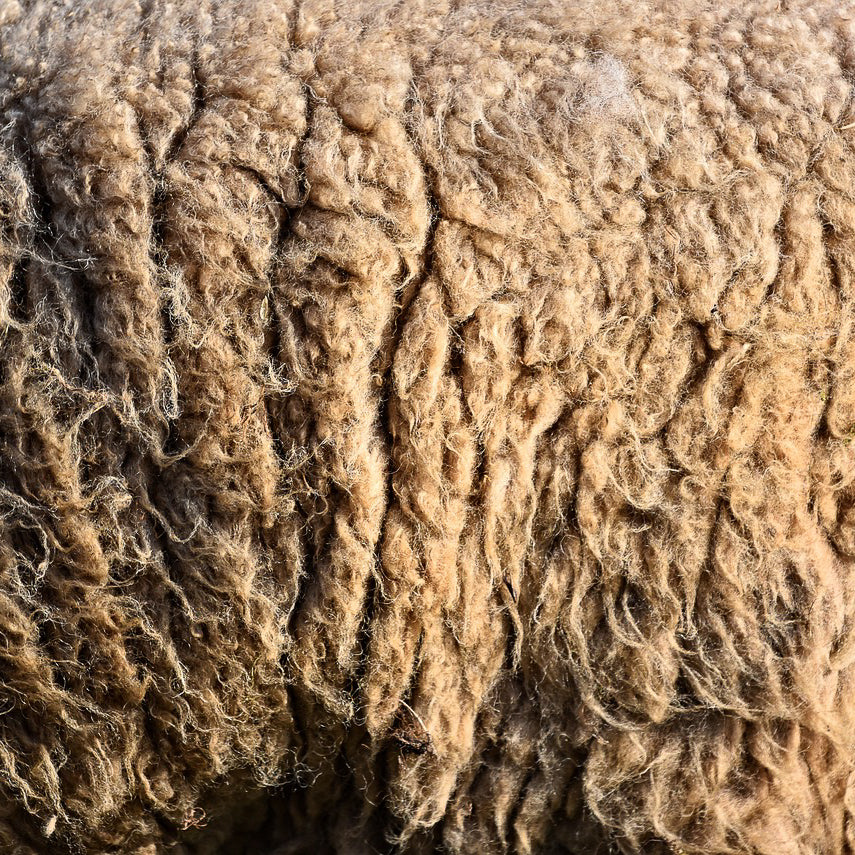
SHEARING & WOOL GATHERING
Harris Tweed® cloth is made with pure virgin wools, which are blended together to gain the advantages of their unique characteristics. Although most of the wool comes from the Scottish mainland, in the early summer, the island communities join together to round up and shear the local sheep, which are dotted throughout the landscape.
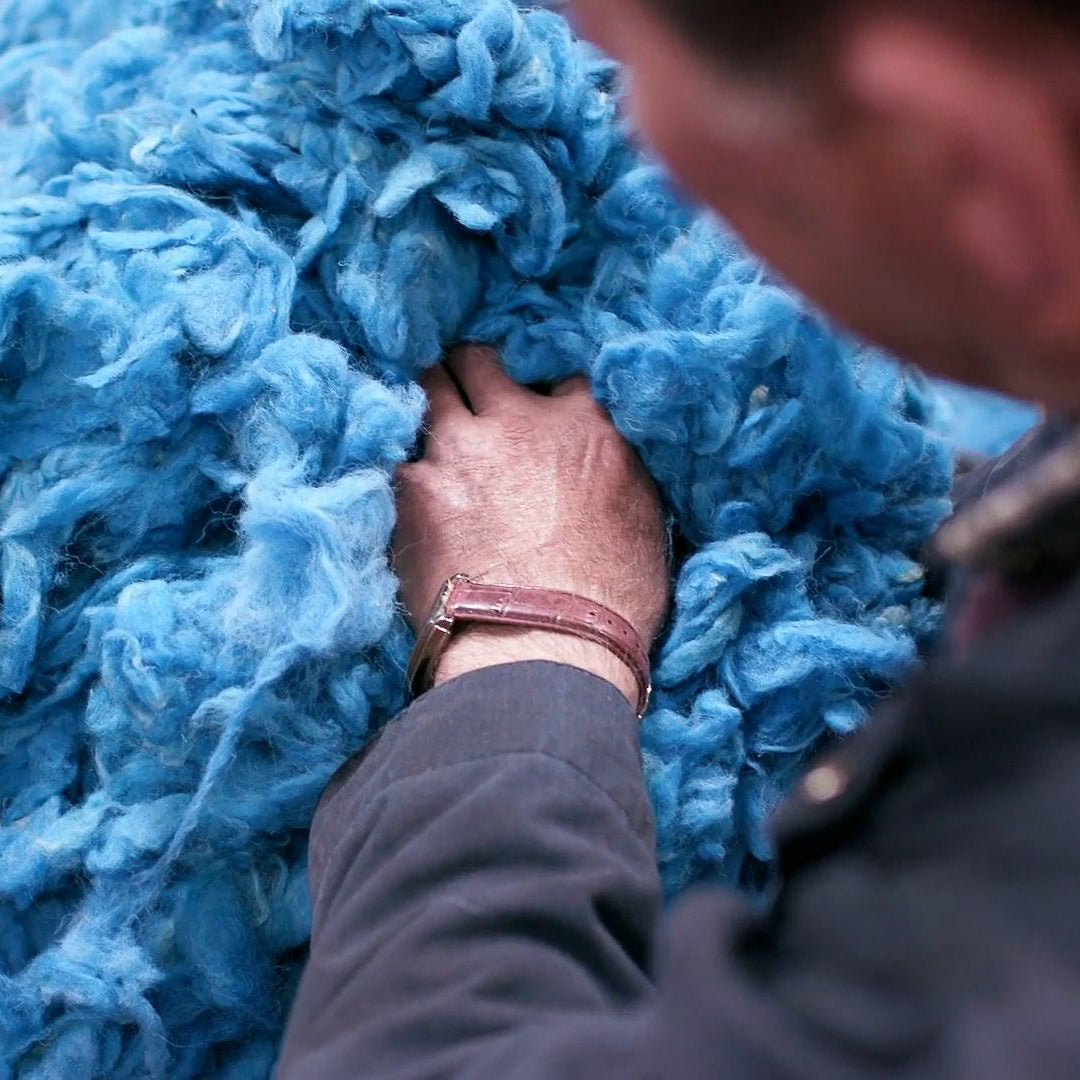
WASHING & DYEING
Harris Tweed is truly dyed in the wool, i.e. the wool is dyed prior to being spun as opposed to dyeing spun yarn. This means different coloured wools are blended to create a myriad of intricate shades and hues. As the vegetation is now protected, natural dyes be can no longer be used. However,Harris Tweedis a truly ecologically sound textile, with a low-impact VOC (volatile organic compound) absorbent production process, and is non-allergenic and biodegradable.
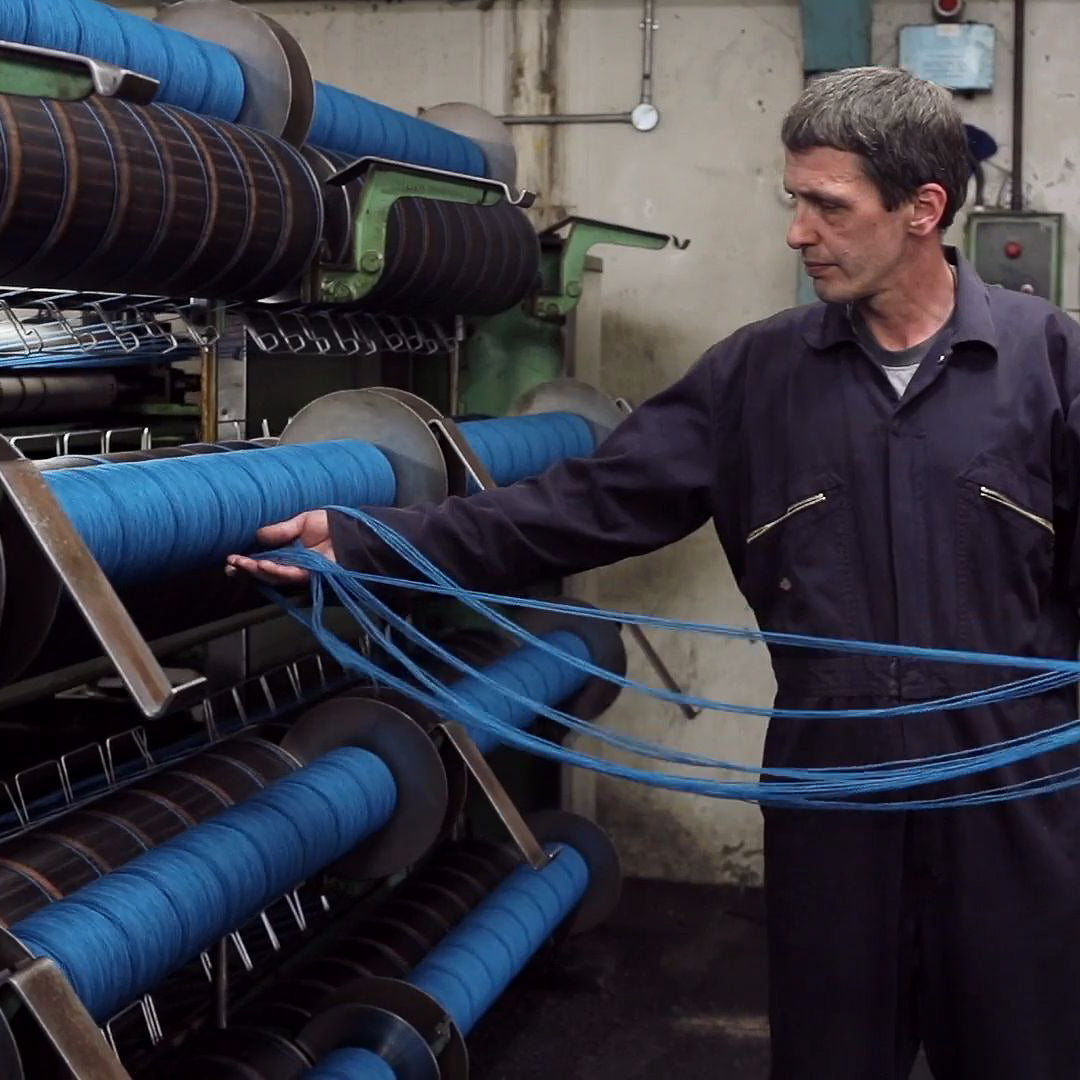
BLENDING & CARDING
The dyed wools are weighed in pre-determined proportions and thoroughly blended to exact recipes to obtain the perfect hue. They are then carded between mechanical, toothed rollers that tease and mix the fibres before being separated into a fragile, embryonic yarn.
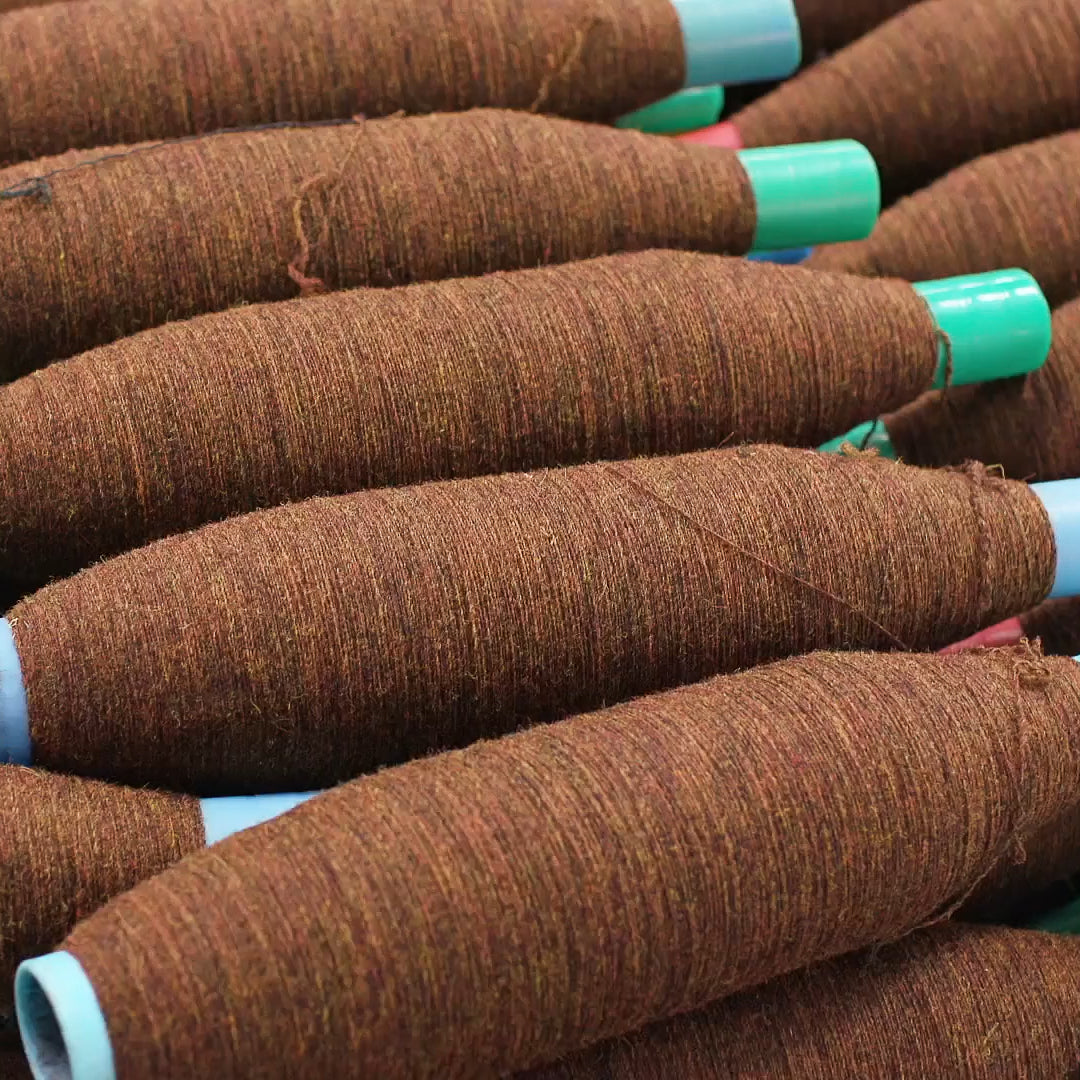
SPINNING
The soft yarn has a twist imparted to it as it is spun to give it maximum strength for weaving. The spun yarn is wound onto bobbins to provide the ingredients for the loom: weft (left to right threads) and warp (vertical threads).
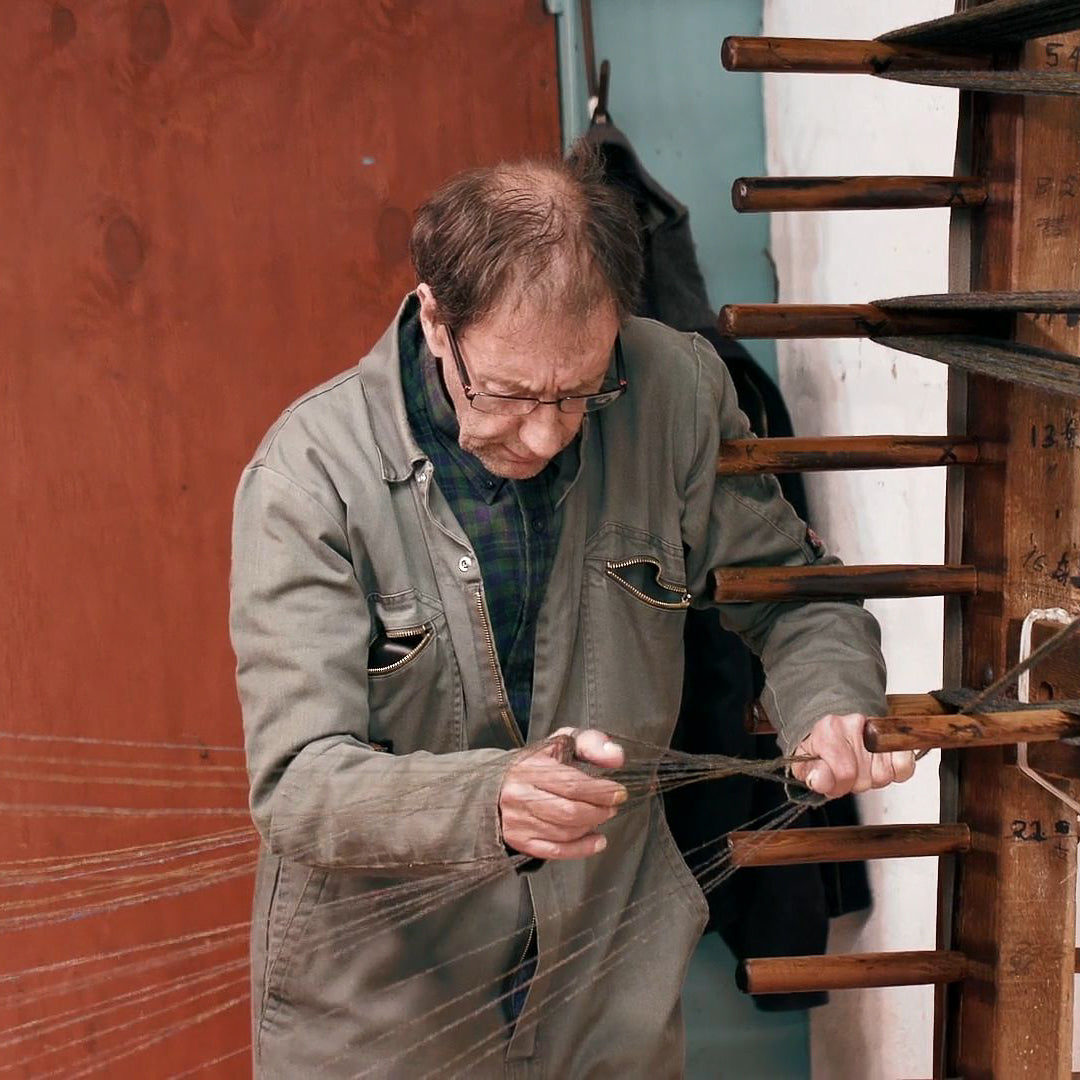
WARPING
This highly skilled process sees thousands of warp threads gathered in long hanks in specific order and wound onto large beams ready to be delivered, together with yarn for the weft, to the weavers at their homes.
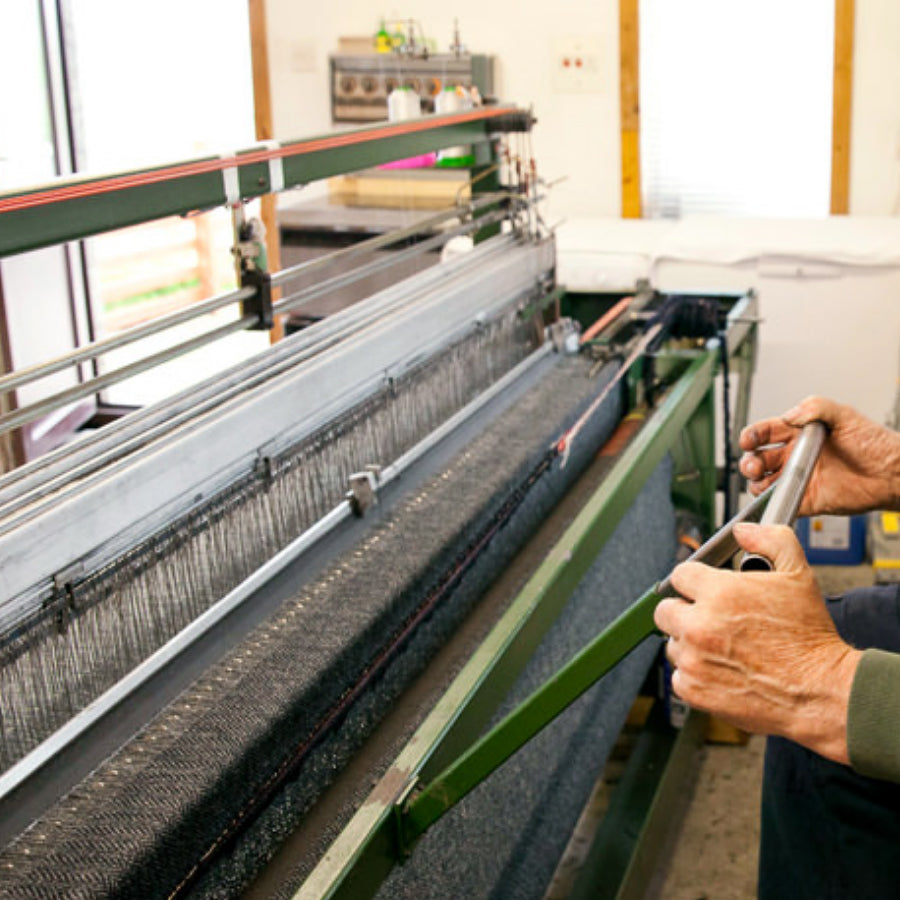
WEAVING
All Harris Tweedis woven on a treadle loom at an islander’s home, not at a mill. The warp and weft yarns arrive from the mill. Then the weaver sets to work, hand tying the new yarns to the tail-ends of the previous weave, to make it easier to thread onto the loom. Weaving the cloth can now begin under the careful observation of the weaver.
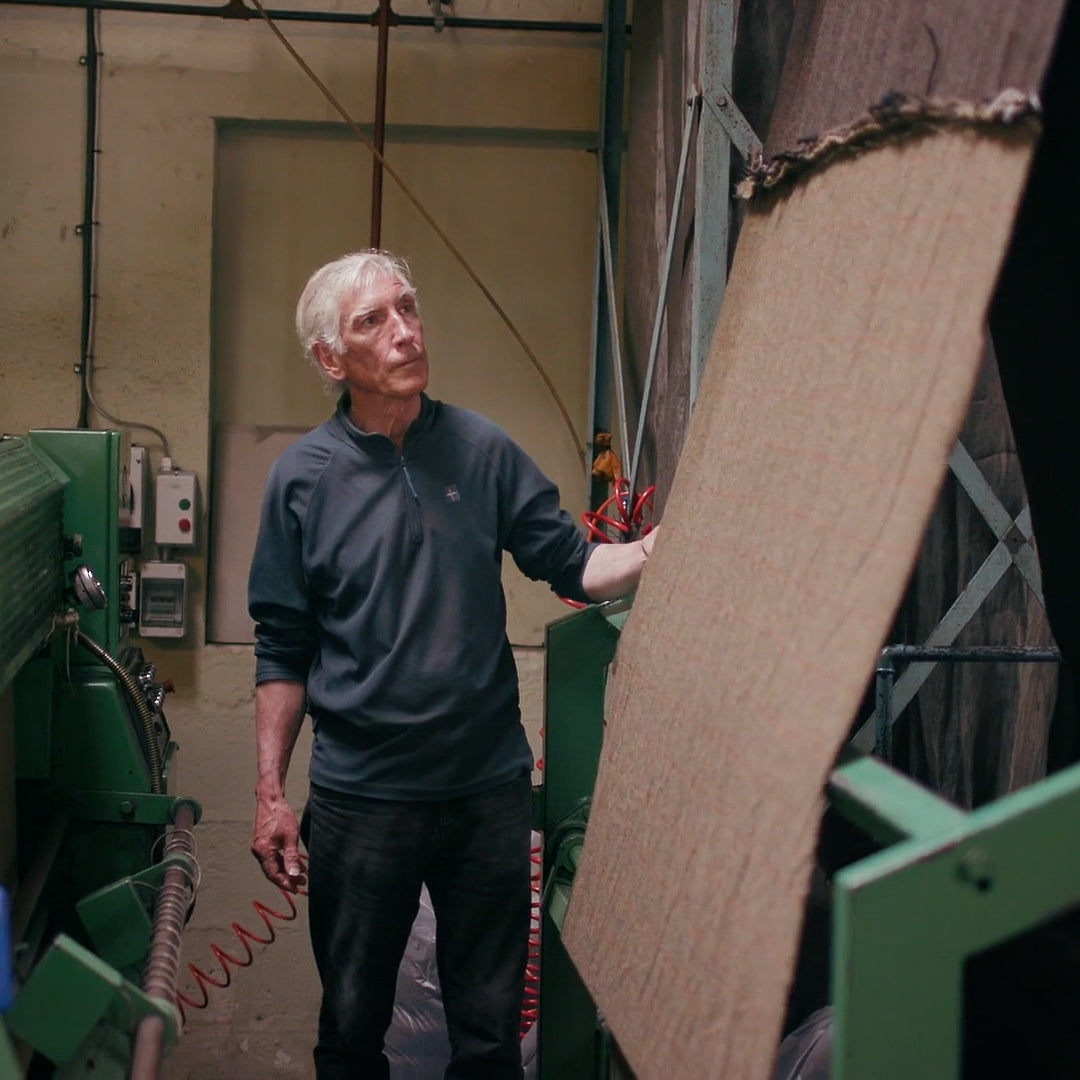
FINISHING
The tweed returns to the mill in its 'greasy state' and here it passes through the nimble hands of experienced, sharp-eyed darners who correct even the smallest of flaws. Dirt, oil and other impurities are removed by washing and beating in soda and soapy water, before it is dried, steamed, pressed and cropped to a perfect, flawless condition.
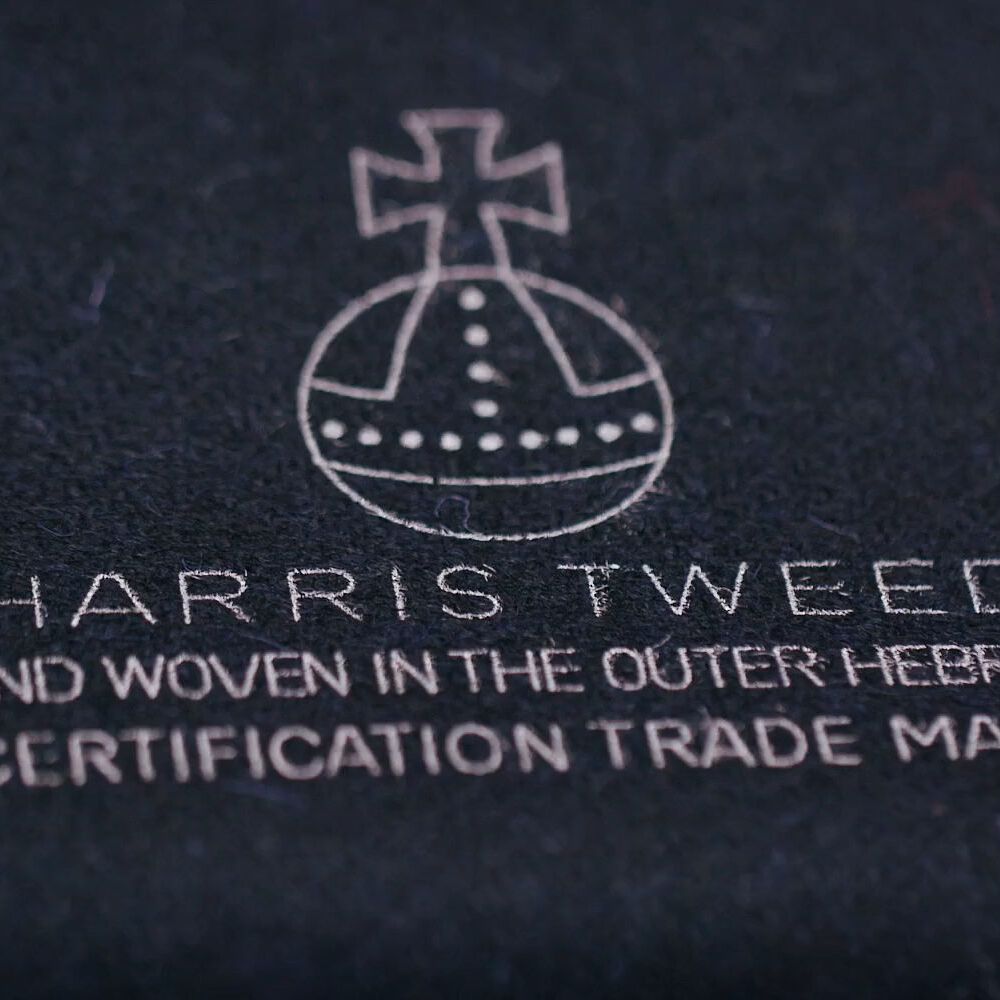
STAMPING
The final stage in the process is the examination by the independent Harris Tweed Authority inspector, who, when satisfied that the cloth meets the standards, applies the famous Orb certification mark, which is ironed on to the reverse of the fabric. This is the ultimate seal of authenticity.

Welcome to Homecore
Join the Homecore Family and get 10% off your first order
